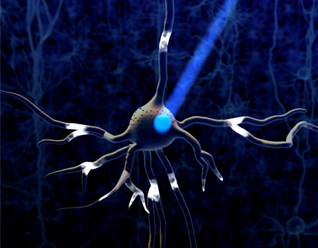[Techtaffy Newsdesk]
Researchers at MIT and Georgia Tech have developed a way to automate the process of finding and recording information from neurons in the living brain. The researchers have shown that a robotic arm guided by a cell-detecting computer algorithm can identify and record from neurons in the living mouse brain with better accuracy and speed than a human experimenter.
The new automated process eliminates the need for months of training and provides long-sought information about living cells’ activities, according to a statement released by MIT, and written by Anne Trafton of the MIT News Office.
Using this technique, scientists could classify the thousands of different types of cells in the brain, map how they connect to each other, and figure out how diseased cells differ from normal cells, says MIT. The method could be particularly useful in studying brain disorders such as schizophrenia, Parkinson’s disease, autism and epilepsy.
The project is a collaboration between the labs of Ed Boyden, the Benesse Career Development associate professor of biological engineering and brain and cognitive sciences at MIT, and Craig Forest, assistant professor of mechanical engineering at Georgia Tech.
Boyden says he believes this is just the beginning of using robotics in neuroscience to study living animals. A robot like this could potentially be used to infuse drugs at targeted points in the brain, or to deliver gene therapy vectors. He hopes it will also inspire neuroscientists to pursue other kinds of robotic automation — such as in optogenetics, the use of light to perturb targeted neural circuits and determine the causal role that neurons play in brain functions.
Neuroscience is one of the few areas of biology in which robots have yet to make a big impact, Boyden says.
Other co-authors include MIT grad student Giovanni Talei Franzesi and MIT postdoc Brian Y. Chow.
Development of the new technology was funded primarily by the National Institutes of Health, the National Science Foundation and the MIT Media Lab.
[Image Courtesy: Ed Boyden, Synthetic Neurobiology]


